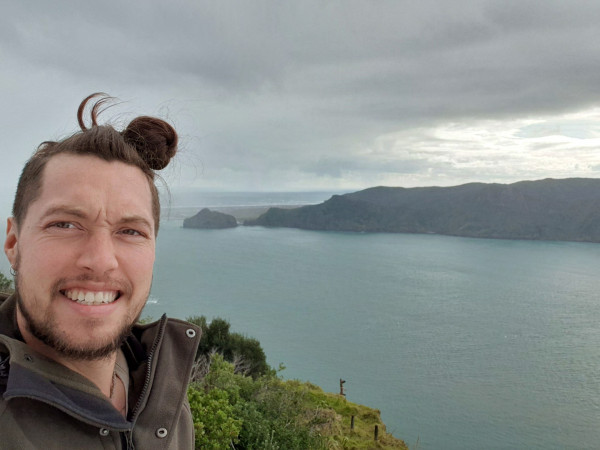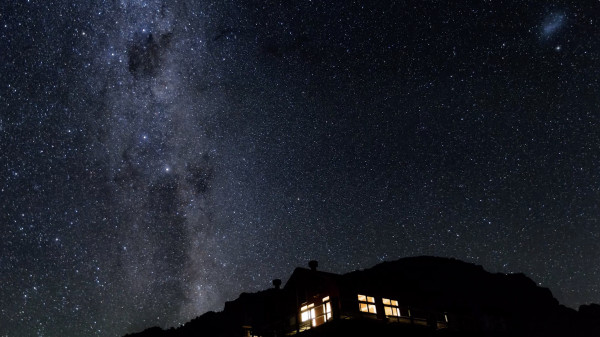Matariki: a glimpse into te ao Māori | Partner perspective
As Aotearoa introduces a new public holiday, it’s a time to reflect and understand the Māori interpretation of the star constellation, Matariki, and it’s connection to the environment we explore.
Kuruho Wereta, Kaiarahi Tikanga Māori (Māori Cultural Advisor) at Recreation Aotearoa, a New Zealand Mountain Safety Council partner, shares his perspective.

Kuruho Awhitu | Recreation Aotearoa
Matariki is a time for us to connect with the environment and to share with one another. The new Matariki holiday has provided us with an opportunity to turn our attention to the skies and look to Te Whānau Mārama (the family of light) and wonder in admiration. While Matariki is gaining in acceptance across Aotearoa, there is still a lot to discover and learn as New Zealanders.
Matariki is known by many names across the world and holds important values and meanings for the people who have observed it for thousands of years. Māori have a deep connection to te taiao (the environment) this connection was formed through the practise of mātauranga Māori (indigenous knowledge systems) and has underpinned the cultural belief systems and practices.
The ability to obtain celestial knowledge and to interpret the natural indicators of the environment is in essence what Matariki is about. In Māori society, Matariki was used to come together as whānau and hapū to reflect on the past and to set intention for the future based off their interpretation of the star constellation. An incidental outcome of these practices wove in elements of kaitiakitanga (guardianship, sustainability) into Māori society.
Te whare wānanga or te whare kōkōrangi (schools of higher learning, house of astronomy) held this knowledge of the stars and the universe and was taught through personification narratives and a developed appreciation of the natural world. These places of learning had been disestablished post 1840. To summarise there is still a lot of inequities inhibiting the development of mātauranga Māori, the restoration, reclamation, relearning of these cultural practices is going to take time and resources. We must remember to be respectful and patient when seeking this sacred knowledge from Māori.
Māori also used a lunar calendar which is based on the monthly cycles of the Moon's phases, in contrast to solar calendars (Gregorian), whose annual cycles are based only directly on the solar year thus creating a different understanding of time. Māori ancestors used the stars for navigating the open seas and traversing across the land with no assistance of a GPS, the ability to do this required a fluency of reading the environment and making decisions based off what was observed. The first appearance of Matariki before sunrise in the north-eastern sky, happens about mid-June however depending on where you are located will determine what you see, reminding us that there is no right way to do things and that the many perspectives people hold only enhances our understanding.
Observing the grouping of stars requires you to be in a space with low light pollution, you want to be in a position that has a good view of the skies. One approach is to head to the mountains to your favourite hut, whilst paying attention to the flora and fauna which furnishes our environment.

Our society today has become more reliant on technology and modern science to guide us, this has sometimes been to the detriment of mātauranga Māori and other indigenous sciences because it does not accommodate the beliefs, practise of minority cultures. As a result, this has often disconnected people further from being able to learn some of these ancient skills.
In an outdoor recreation context, Matariki could be used in several ways to influence the planning of your walk and to underpin what the purpose of your walk is. Create the time to gaze to the morning sky before sunrise with your family and friends and seek insights to grow your appreciation for the wonders of the world, what can be ascertained from this, what values of kinship and wellbeing can be woven into your future experiences. Matariki is much more than a public holiday, it is an opportunity to embrace the culture which has formed the national identity of Aotearoa, it is time to embrace kaitiakitanga, manaakitanga values and is a reminder to stay connected with everything around us.
Nā Kuruho Wereta
Ngāti Raukawa ki te Tonga, Te Āti Awa, Ngāti Toa Rangatira
Kaiarahi Tikanga Māori - Maori Cultural Advisor at Recreation Aotearoa
Thanks Kuruho for sharing your knowledge and understanding of Matariki with us.
Photos top to bottom: Pleiades Cluster by Stephen Rahn, Kuruho, night sky at Mueller Hut, Aoraki/Mt Cook National Park
For anyone looking to explore and connect with the outdoors this winter, explore our website for resources to keep you safe and warm. If you are looking for places to see the stars, check out our Stuff article or find a hut on the Plan My Walk app.